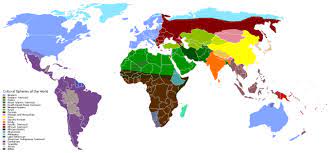Introduction
Geography has been an essential part of human history and civilization from its early beginnings. It is the study of Earth’s landscapes, peoples, places, and environments – both physical and cultural phenomena. This article will discuss how geography has evolved through the early years and explore the importance of understanding our world’s geographical foundations.
Ancient Geography
The first evidence of geographical awareness can be traced back to ancient civilizations such as the Sumerians, Egyptians, Greeks, and Romans. These civilizations created maps of their respective areas, indicating rivers, mountains, and other significant geographical features.
In ancient Greece, great thinkers like Herodotus and Eratosthenes made significant contributions to geography. Herodotus is often referred to as the “Father of History,” as his work “Histories” documented various aspects of the world known to his contemporaries. Meanwhile, Eratosthenes accurately calculated Earth’s circumference and divided it into five climatic zones.
Ancient Rome also made vital contributions to geography. The Roman Empire’s vast size necessitated accurate maps for efficient administration and military planning. The Romans took inspiration from Greek geographers like Ptolemy to create detailed maps with carefully calculated distances between major cities.
Middle Ages
During the Middle Ages in Europe, the importance of geography waned due to several factors such as the decline of trade routes and exploration. Knowledge primarily focused on religious texts and maps mainly displaying biblical locations.
However, during late medieval times, trade began to increase again due to rising demand for luxury goods like spices, silk, and precious metals. This increasing interest in trade led Europeans to venture further outside their borders.
Islamic Golden Age
During the Islamic Golden Age (8th – 14th centuries), Muslim scholars made several advancements in geography by translating Greek works into Arabic and creating new knowledge through research and direct observations. The famous Persian scholar Al-Idrisi created a detailed world map in 1154 that improved upon Ptolemy’s work and remained influential for centuries.
Age of Exploration
The 15th and 16th centuries marked the Age of Exploration when European explorers began venturing beyond their borders and discovered new lands and trade routes. During this time, advances in cartography, navigation, and shipbuilding fueled the exploration of uncharted territories.
Conclusion
Through the early years of geography, humanity’s understanding of our world has expanded exponentially. From ancient civilizations to modern times, geography has been crucial for efficient trade, administration, and large-scale endeavors. Knowledge about Earth’s landscapes and peoples plays a critical role in shaping our global perspective and cultural understanding. Today, geography remains essential as we work together to address pressing global issues related to climate change, resources allocation, globalization, and more.





